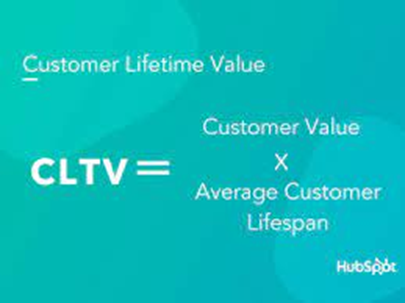Customer lifetime value (LTV) is one of the most important metrics for startups. It helps you measure how valuable your customers are and how much money you can make from them. In this post, we’ll explain what LTV is and why it’s so important for startups. We’ll also provide tips on how to increase your LTV. Are you ready to learn more? Let’s get started!
What Is Customer Lifetime Value (LTV)?
Customer Lifetime Value (LTV) measures the amount of gross profit that is made by a customer over the lifespan they do business with your company. In other words, it’s a measure of how much profit a company can expect to make from a single customer over the entire course of their relationship. There are a number of different ways to calculate LTV, but the most common approach is to take the average repeat purchase rate and multiply it by the gross margin.
LTV is an important metric for businesses because it helps them to assess the profitability of their customer relationships. It’s also a useful tool for making marketing and sales decisions. For example, if a company knows that the LTV of its customers is high, it may be willing to spend more money to acquire new customers. Conversely, if the LTV is low, the company may be more focused on retaining existing customers.
Why Is It Important For Startups To Track This Metric?
It is important for startups to track their customer lifetime value because the LTV metric provides essential insights into the profitability of a startup’s business model. The LTV metric can help startups to assess whether their pricing strategy is sustainable, identify areas where they may be losing customers, and understand which customer segments are most valuable to the business.
In addition, tracking LTV can also help startups to create more targeted marketing campaigns and optimize their sales and retention efforts. By understanding their customer lifetime value, startups can make more informed decisions about how to grow their business.
How Do You Calculate Customer Lifetime Value?
To calculate it, you need to know two things: the value of each purchase and the average lifespan of a customer.
The customer value is simply how much profit you make from each sale. To calculate it, take the total revenue from a sale and subtract the costs associated with that sale. This could include the cost of goods, shipping, taxes, and any fees charged by third-party platforms.
The average lifespan of a customer (also known as the customer retention rate) tells you how long customers stay with your company. To calculate it, take the number of customers at the beginning of a period and divide it by the number of customers you acquired during that period. For example, if you started the month with 100 customers and acquired 10 new ones, your customer retention rate would be 90%. This number can fluctuate over time, so be sure to track it on a regular basis.
Once you have these two numbers, simply multiply them together to get your CLV. For example, if each customer spends an average of $100 per year and has a retention rate of 90%, their CLV would be $100 x 90% = $90.
LTV is a valuable metric for any business because it helps you allocate your marketing budget more effectively. It also gives you insight into which product categories are most popular with your target audience and where you might need to make improvements to your retention efforts. By understanding your LTV, you can make smarter decisions about where to invest your time and resources to grow your business.

Factors That Affect The Customer Lifetime Value
There are various factors that affect the customer lifetime value of a business. It is important to understand these factors in order to optimize the value that a business can provide to its customers.
The following are some of the key factors that affect customer lifetime value:
The quality of the products or services that a business provides:
The better the quality of the products or services that a business provides, the more likely customers are to continue using them. This also leads to increased customer satisfaction and loyalty, which can further increase customer lifetime value.
The price of the products or services:
If the prices of the products or services are too high, customers may be reluctant to continue using them. On the other hand, if the prices are too low, the business may not be able to sustain itself in the long run. Therefore, it is important to find a balance between price and quality in order to optimize customer lifetime value.
The level of customer service:
The better the level of customer service, the more likely customers are to be satisfied with the products or services they receive. This can lead to increased customer loyalty and higher customer lifetime value.
The convenience of the products or services:
If the products or services are not convenient to use, customers may be less likely to continue using them. This is why it is important to make sure that the products or services are easy to use and accessible.
The marketing of the products or services:
If the products or services are not marketed properly, customers may be unaware of them. This can lead to lower customer lifetime value.
By understanding these factors, businesses can optimize the value they provide to their customers. By doing so, they can increase their chances of success in the long run.
What Is A Good Customer Lifetime Value?
A good customer lifetime value is important for any business because it shows how much revenue a customer will bring in during their lifetime. A higher customer lifetime value means that a customer is worth more to a company and will bring in more revenue over time.
There are a number of factors that go into determining a person’s customer lifetime value, including the average order size, the frequency of purchases, and how long they stay with a company.
Generally speaking, your Customer Lifetime Value should be at least three times greater than your Customer Acquisition Cost (CAC). This ensures that you are making a profit off of each customer and that your business is sustainable in the long run.
If you are not able to acquire new customers at a low enough cost or retain them for a long enough period of time, then your business will not be profitable. Therefore, it is essential to focus on both acquiring new customers and keeping them happy so that they continue to do business with you.
Examples Of Customer Lifetime Value
The best way to understand LTV is through examples. Here are some examples from three different industries to better show how customer lifetime value may impact your company:
eCommerce
An example of how customer lifetime value works in eCommerce can be seen with Amazon. Amazon’s Prime membership includes free two-day shipping, which encourages customers to shop more frequently and spend more per purchase. In fact, one study found that Prime members spend an average of $1,300 per year, compared to non-Prime members who spend $700 per year. This difference in spending creates a higher customer lifetime value for Amazon.
SaaS
Recurly, a subscription management software company, is an example of how customer lifetime value works in the SaaS industry. Recurly offers a free trial and then charges customers based on usage. The company found that its best customers (those who had the highest customer lifetime value) were those who signed up for the free trial and then upgraded to a paid plan.
Retail
Lululemon, a retailer known for its yoga pants, is an example of how customer lifetime value works in retail. The company offers free shipping on orders over $125 and free returns, which encourages customers to spend more per purchase. Lululemon also has a loyalty program, which gives customers points for every purchase they make. These points can be redeemed for discounts on future purchases. The combination of free shipping, free returns, and a loyalty program creates a higher customer lifetime value for Lululemon.
CLV can vary greatly by industry, but the examples above show how important it is to understand your customers’ lifetime value. By understanding CLV, you can make better decisions about marketing, product development, customer service, and more.
Tips To Increase Your Customer Lifetime Value (LTV)
As a business owner, you’re always looking for ways to increase revenue and grow your company. A great way to do this is by increasing your customer lifetime value (LTV).
There are a number of ways to increase your LTV. Here are a few tips:
Increase customer loyalty
One of the best ways to increase LTV is by increasing customer loyalty. The longer a customer stays with your company, the more revenue they will generate. There are a number of ways to increase customer loyalty, such as offering incentives for referrals, providing excellent customer service, and creating a VIP program.
Increase the average order size
Another way to increase LTV is by increasing the average order size. If each customer spends more money per transaction, they will generate more revenue over time. There are a number of ways to increase the average order size, such as upselling and cross-selling.
Increase the frequency of purchases
Another way to increase LTV is by increasing the frequency of purchases. If customers purchase more often, they will generate more revenue over time. There are a number of ways to increase the frequency of purchases, such as offering discounts for repeat customers and creating a subscription service.
Increase customer lifetime
Finally, another way to increase LTV is by increasing customer lifetime. If customers remain customers for a longer period of time, they will generate more revenue over time. There are a number of ways to increase customer lifetime, such as offering loyalty programs and warranties.
By increasing your LTV, you can generate more revenue and grow your business. These are just a few tips to get you started. Try implementing one or more of these strategies and see how it impacts your bottom line.
Conclusion
Startups should focus on Customer Lifetime Value (LTV) because it is a key metric that highlights the potential value of a customer. By understanding LTV, startups can make informed decisions about where to allocate their resources in order to create long-term relationships with customers that are valuable to the company.

